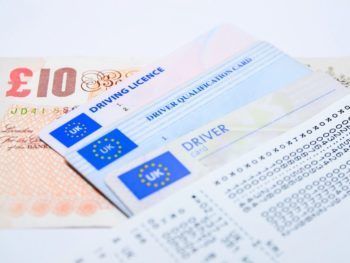Fleets have been told not to panic when it come to licence and document checking in the wake of the UK having formally left the EU – but urged to start making preparations for likely fundamental changes ahead.

The call comes from Licence Bureau – and echoed by the Association for Driving Licence Verification (ADLV) – as it outlines that the current 11-month transition period means it’s business as usual for licence checking as current UK/EU rules will still apply and may be extended further dependent on any specific deal outcomes.
A UK driving licence will continue to be a requirement to drive in the EU, Switzerland, Norway, Iceland and Liechtenstein. Validity of current UK licences will remain, and specified driving permissions will not alter. The same will apply for drivers with non-UK licences.
However, Licence Bureau is urging businesses to consider that these rules may change and put into place plans to ensure they are fully prepared for what may lie ahead after the 11-month transition period is up, in order to ensure there is no disruption to activity.
This covers four key areas:
International Driving Permits (IDP)
Although the requirement of IDPs is dependent on a future UK-EU trade deal, drivers may need one or more IDPs, as well as a UK driving licence, to drive in an EU or European Economic Area (EEA) country. With three types of IDP, the type required will be dependent on the country you will be driving in therefore businesses will have to understand their needs.
Insurance
Drivers will need to carry a motor insurance ‘green card’ when driving in the EU and EEA, and certain instances such as fleet insurance may require multiple green cards. The advice is to contact your vehicle insurance provider one month before you travel. Whilst this is a controlled process for a business’ own vehicle fleet and single insurer, companies need to ensure the message is communicated to all staff using their own vehicles outside of the UK on business.
Vehicle registration documents
Short trips may require drivers to carry either a vehicle logbook (V5C) and an original Vehicle Registration Document (VRD) or a VE103 and a Vehicle on Hire Certificate if the vehicle is hired or leased. This is again a more controlled planning process for company car drivers but must be communicated to all staff using their own vehicles for business.
Non-UK licence holders driving in the UK
The rules have not changed but businesses need to ensure they are reviewing and documenting licence categories, expiry dates and locations where a driver passed their test. Just because they have an EU licence does not mean they passed their test there. Areas to cover off include: what is their entitlement to drive? Do they have convictions in the UK? When did they first start driving here?
The ADLV has also called for operators to review non-UK driving licences. Whilst convictions in the UK for non-UK licence holders are not shown on overseas licences, they are still recorded by the DVLA.
Malcolm Maycock, chair of the ADLV, as well as managing director of the ADLV, added: “Whilst nothing changes for drivers leaving the UK, few companies seem to recognise the very real requirements for thoroughly checking non UK Licence holders entering the country.
“By checking non-UK licences, companies maintain far greater control of risk and contribute greatly to road safety.”
He added: “Over time we shall continue to work closely with the DVLA to manage and communicate changes as they appear, although we don’t expect many before the end of the year.”

